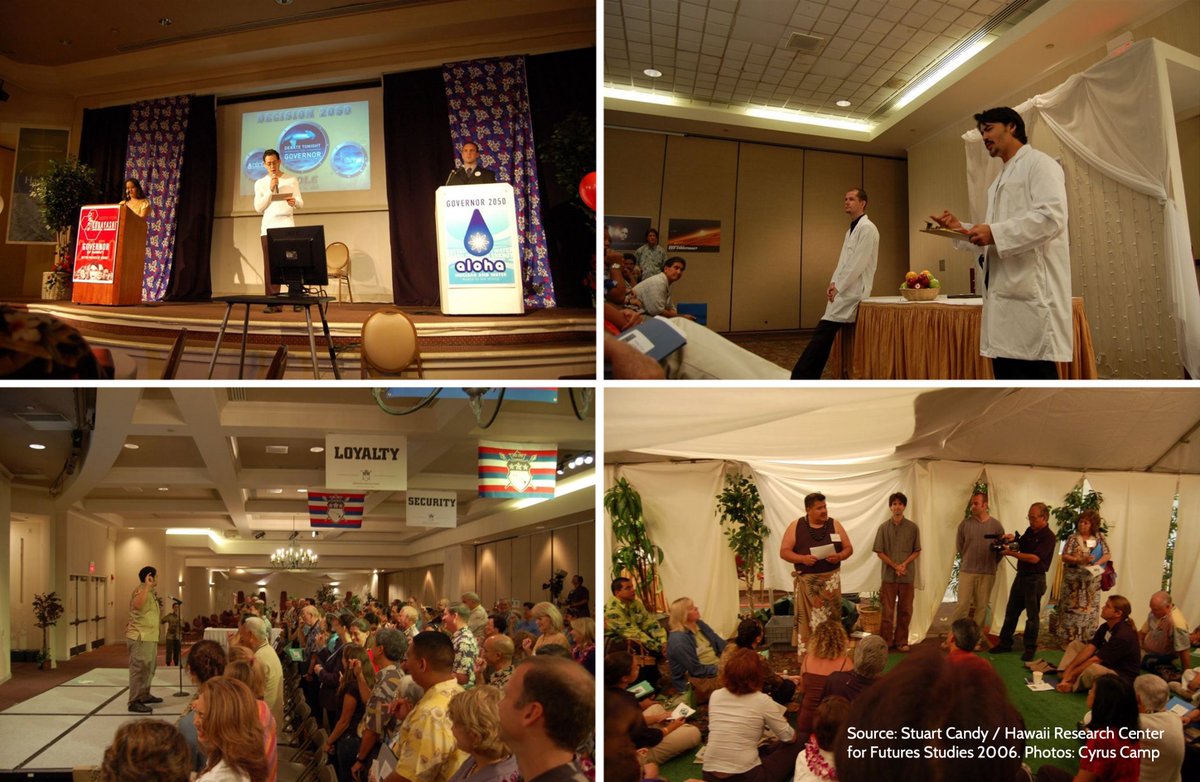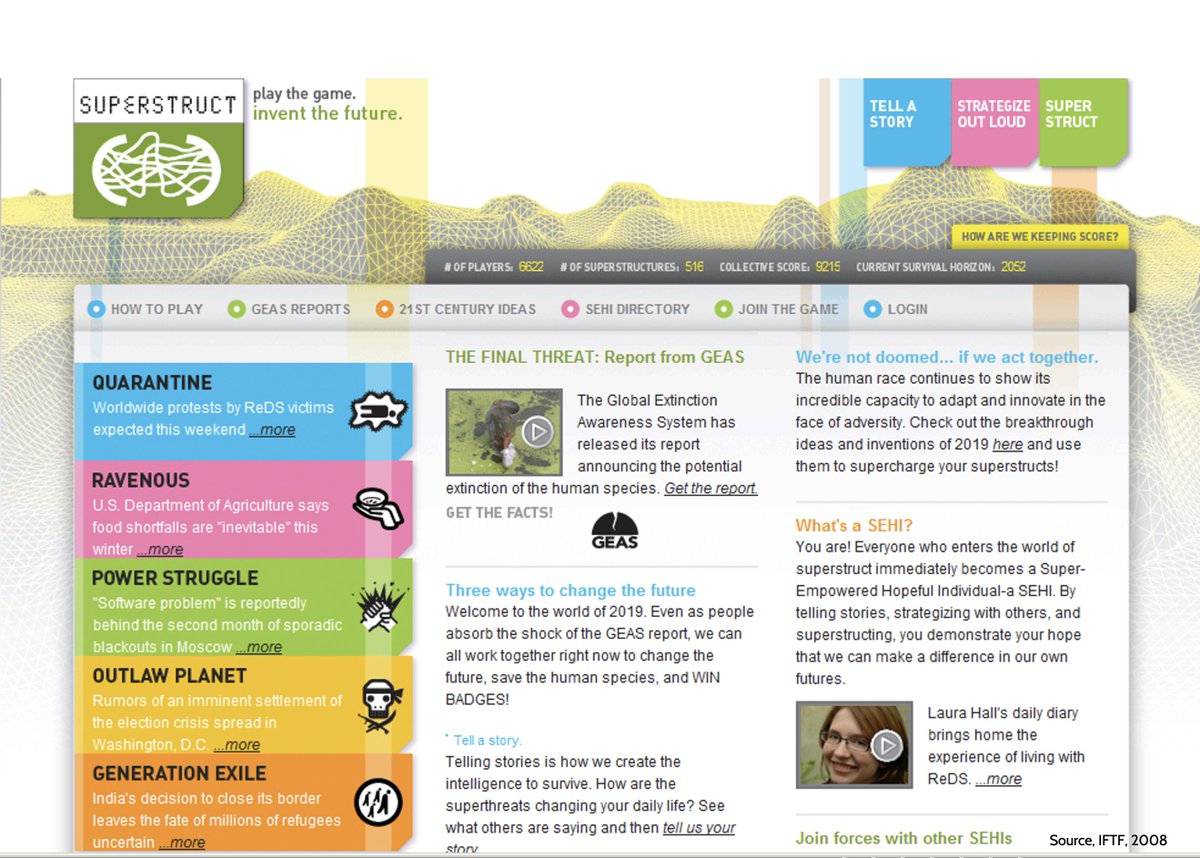COVID-19 is a vivid illustration of both the importance and the limits of foresight. Let me tell you a story.
<thread>

One thing we tried was doing physical future installations & encounters in the streets, publicly bringing possible worlds to life. We called this “guerrilla futures”... /4
Outbreaks, like earthquakes, happen periodically. They can’t be completely avoided; only mitigated through effective anticipation, preparation and response. /8

By this point (early 2009), there had not in fact been one in more than 40 years –– the 'Hong Kong Flu,' 1968. /15
“Oink.”
Plus a link to an obscure report about an emerging swine flu strain apparently showing up in Mexico.
All agreed –– a very strange coincidence! /21
The major push we had put in to making this unfamiliar experience of a pandemic more imaginable was instantly made redundant by reality. /22
We rebooted the whole effort to have it revolve directly around helping players learn how to avoid getting sick and spreading illness. /26
This welcome news had a darker underside. Concern was activated, yet followed by an experience for many no different than a regular flu season. /29
And yet. /31
Pandemic preparedness is not a one-shot proposition.
Neither, for that matter, is community resilience. Nor is the capacity for foresight more broadly.
These things require habit. Collectively, they are *cultural*. /35
#foresight #futuresstudies #anticipation #scenarios #strategicforesight #designfutures #experientialfutures #timemachines
(Note: not everyone with "futurist" in their bio necessarily knows about the field, history, methods, etc) /39
*In addition* –– we need to cultivate wiser, more farsighted and systemically-literate habits of mind, as individuals, as organisations, and yes, as whole societies; a distributed capacity called #socialforesight /40
And what we must do as a whole society is increasingly clear. Whether we will step up is currently an open question. /41
–– Kurt Vonnegut, Slapstick
</thread>


















